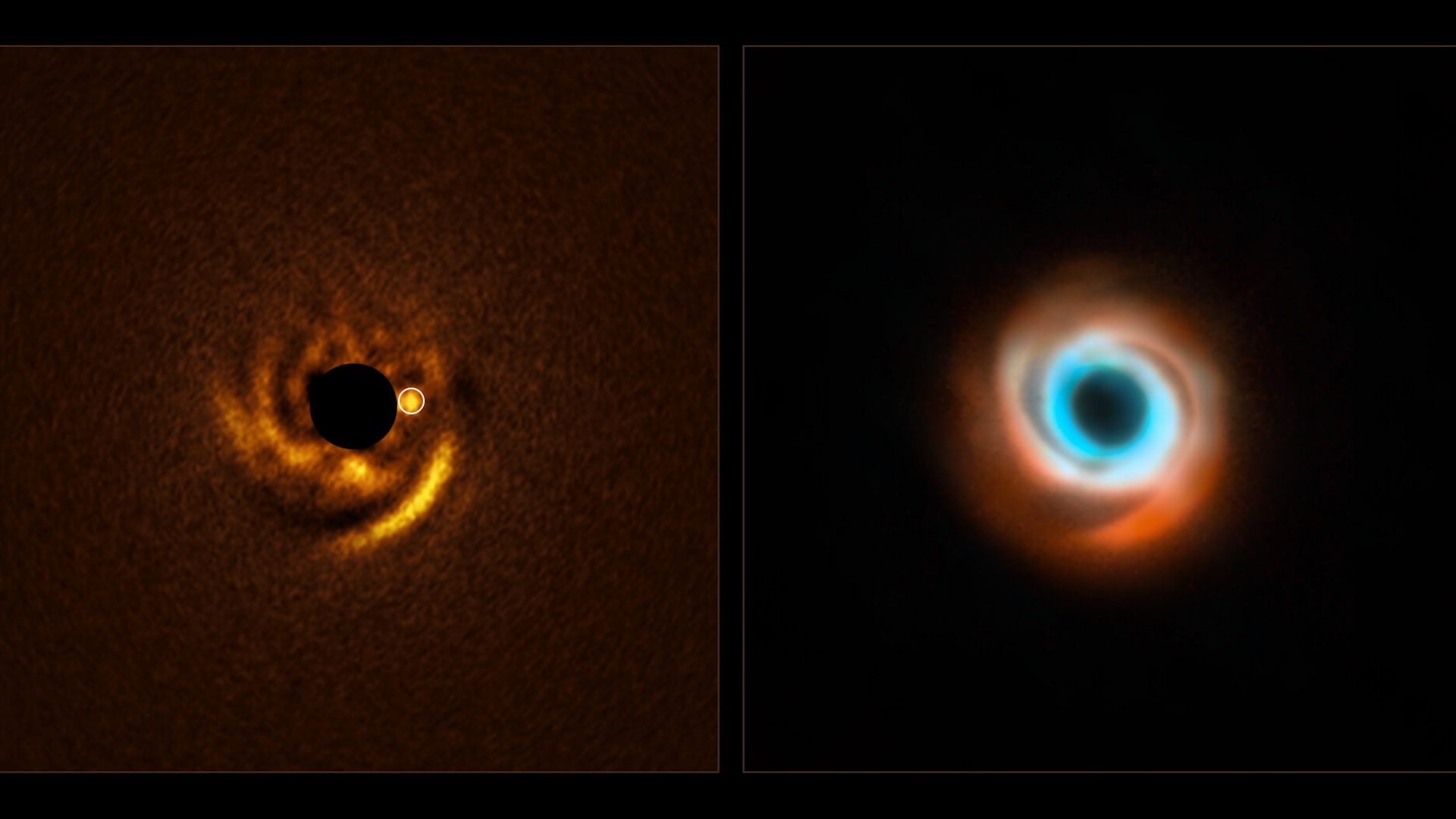QUICK FACTS
What it is: A potential planet around the star HD 135344B
Where it is: 440 light-years away, in the constellation Lupus
When it was shared: July 21, 2025
Deep within a swirling disk of gas and dust around the star HD 135344B, a young planet appears to be sculpting intricate spiral arms around its stellar host. It is the first time a planet has been found embedded inside a dust spiral around a star, actively shaping its environment.
The discovery is further proof that the building blocks of planets emerge from protoplanetary disks — giant, doughnut-shaped disks of gas and dust that circle young stars, according to NASA.
These dense, rotating clouds of material around young stars have been seen to feature rings and spirals suspected to be caused by the presence of baby planets, but this is the first direct evidence. In fact, the sculpted protoplanetary disk around the host star, HD 135344B, had been seen before by astronomers using the SPHERE (Spectro-Polarimetric High-contrast Exoplanet Research) instrument on the European Southern Observatory’s Very Large Telescope in Chile.
However, by using a new instrument called the Enhanced Resolution Imager and Spectrograph (ERIS), scientists finally discovered a planetary candidate. The planet is nestled at the base of one spiral arm — exactly where models predicted a planet would be needed to generate such a feature — and is thought to be twice the size of Jupiter. It’s about as far from its host star as Neptune is from the sun, or about 30 times the distance from Earth to the sun.
“What makes this detection potentially a turning point is that, unlike many previous observations, we are able to directly detect the signal of the protoplanet, which is still highly embedded in the disc,” Francesco Maio, a doctoral researcher at the University of Florence and lead author of a study describing the discovery, said in a statement.
Related: 32 alien planets that really exist
The existence of many exoplanets — planets that orbit a star other than the sun — is inferred from other information, such as the dip in a star’s brightness that is assumed to be caused by a planet. Observing the planet’s own light — reflected light from its host star — gives the proto-planet’s discoverers a much higher level of confidence in its existence.
“We will never witness the formation of Earth, but here, around a young star 440 light-years away, we may be watching a planet come into existence in real time,” Maio said.
ERIS had a similarly decisive role in another recent discovery. Using ERIS, astronomers found an object — possibly a brown dwarf, an object halfway between a giant planet and a small star — in the protoplanetary disk around the young star V960 Mon, located 5,000 light-years away, in the constellation Monoceros.
For more sublime space images, check out our Space Photo of the Week archives.
